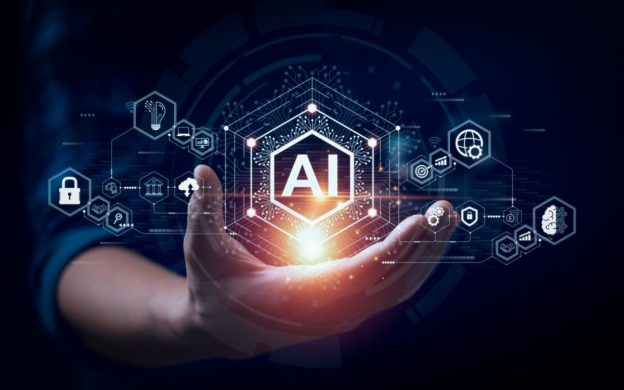Once again, we’ve reached the time of year when we look ahead at what technology has in store for us in 2024. Digital transformation doesn’t end – it’s an ongoing process, and the breakthrough trends that have made 2023 one of the most exciting years for innovation will continue to reshape our world in many exciting ways.
Machine intelligence, the blurring of the boundaries between the real and the virtual, and shaping the ongoing evolution of the internet will all radically impact our lives. But perhaps most important of all will be the search for ways to continue to grow and prosper while minimizing the damage we do to the environment – and perhaps even reversing some of the damage that’s been done in the past.
Generative AI – Everyday Automation
2023 was the year that generative AI burst into the mainstream. 2024 will be the year that the world gets to grips with how truly powerful and useful it can be. Today, if you’re not a techie, just the phrase artificial intelligence (AI) can cause a shiver of fear – if you’re not worried about it taking over the world or destroying the human race, you might be nervously waiting for it to steal your job and make you redundant.
But as generative AI finds its way into more of the applications we use every day, from search engines to office software, design packages and communications tools, people will come to understand its potential. Used properly, it’s like having a super-smart personal assistant on hand 24/7, making us more efficient, faster and more productive.
Most importantly, by handing over our everyday menial brainwork – obtaining information, scheduling, managing compliance, organizing ideas, structuring projects – to AIs, we will find ourselves with more time to leverage our truly human skills. We will spend more time being creative, exploring new ideas and original thinking, or communicating with humans rather than programming machines. The genie is out of the bottle, and while there are undeniable challenges around ethics and regulation that still have to be solved, I believe 2024 will be the year when everyone starts to understand just how transformative generative AI will be to our lives.
Phygital Convergence
The real and the digital are becoming increasingly intertwined. Technologies like augmented reality (AR), virtual reality (VR) and the immersive internet are breaking down barriers between the physical world and the digital domains where we are spending more and more of our time. More so than ever before, we exist as digital avatars within virtual environments. This is true for work, where we collaborate remotely through platforms like Zoom, Teams and Slack, and play, where online gaming and e-sports are more popular than ever. We use social apps like TikTok and Instagram to create virtual spaces where we share moments from our “real” lives – curated and filtered to create digital personalities that become our virtual selves.
Across industries, we see this concept emerging in the form of the digital twin – a virtual representation of a real-world object, system or process. This could be as simple as an individual component or as complex as an entire city or even an ecosystem. Importantly, the digital twin is built from data captured from its real-world counterpart. Advances in the science of genomics mean we can break down the fundamental essence of life into digital code, which can then be manipulated and rebuilt in the real world in order to engineer new drugs and eradicate diseases.
In 2024, we will continue to see less and less distinction between the real world and the virtual world. This means the digital is becoming increasingly realistic, and the real is becoming as flexible and malleable as the digital.
Sustainable Technology
Sustainable technology will continue to take center stage during 2024 as countries and corporations continue to work on meeting net-zero commitments. At the same time, individuals will increasingly leverage technology in order to minimize their personal impact on the environment.
Sustainable technology includes more environmentally-friendly ways of doing things we already do – such as the electric cars, bikes and public transport that will continue to increase their market share in 2024. It also includes novel solutions to environmental problems, such as carbon capture and storage, as well as green and renewable energy technologies. The circular economy will become an increasingly important concept as durability, recyclability and reusability are built directly into products at the design stage. And the tech world will further embrace ideas such as green cloud computing, where infrastructure and services prioritize the reduction of energy consumption and carbon emissions and sustainable apps – software tools designed to help us live in a more eco-friendly manner.
Challenges that developers and users of sustainable technology will need to face during 2024 will include a need to develop ethical and sustainable methods for sourcing and extracting materials needed for manufacturing devices, infrastructure demands created by changing consumer habits such as the adoption of electric vehicles, and potential disparities between different geographic or socio-economic groups in their ability to access green alternatives. We will also become increasingly alert to the presence of greenwashing – superficial efforts intended purely to generate positive PR around a particular technology.
Cyber Resilience
Research suggests that one in two businesses has been the victim of a successful cyberattack in the past three years, and the cost of these attacks to industry is expected to grow to over $10 trillion by the end of 2024. In the face of this fast-growing threat, technology solutions designed to bolster defenses and provide us with a fighting chance are high on every organization’s must-have list.
https://www.forbes.com/sites/bernardmarr/2023/09/11/the-top-5-tech-trends-in-2024-everyone-must-be-ready-for/amp/





